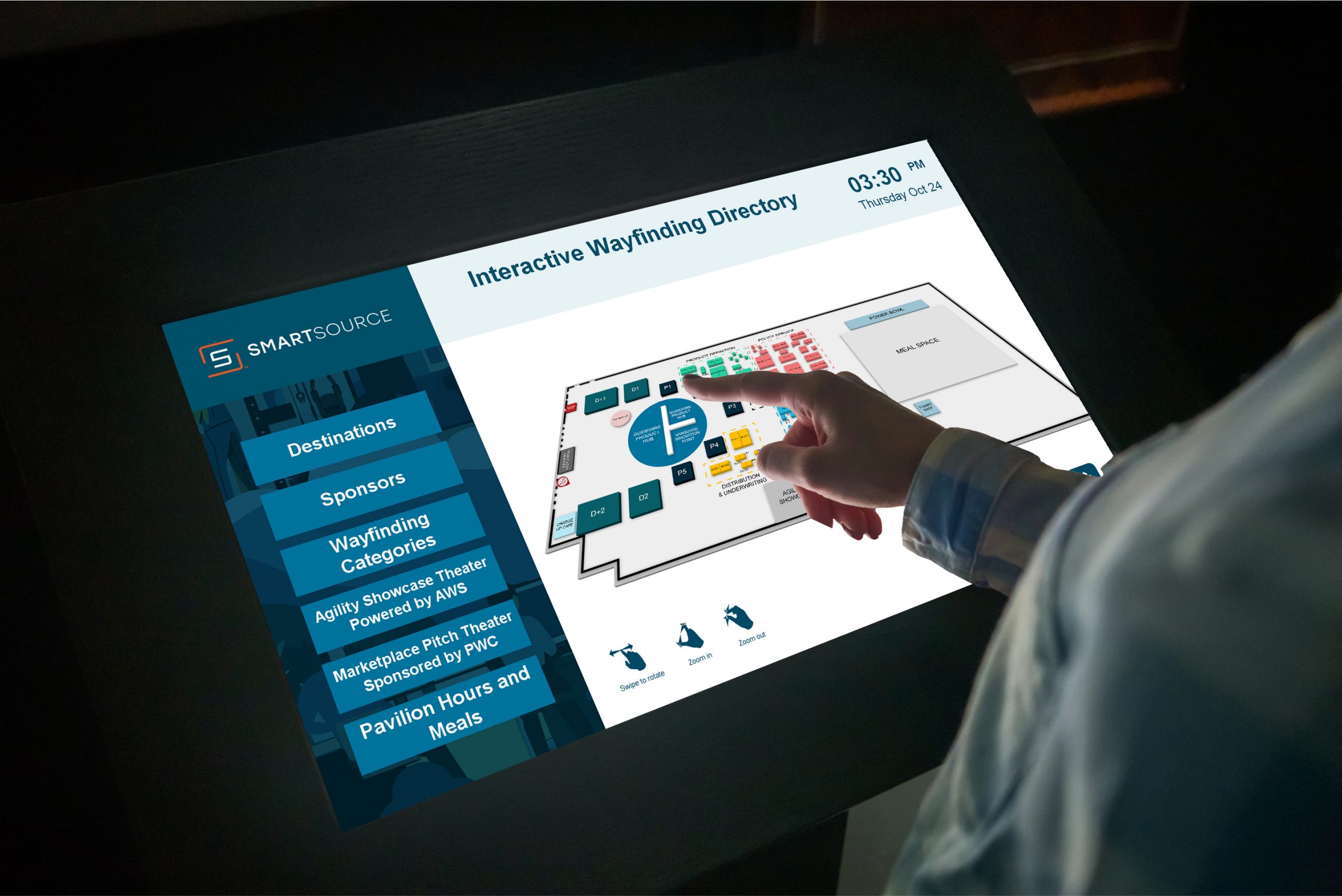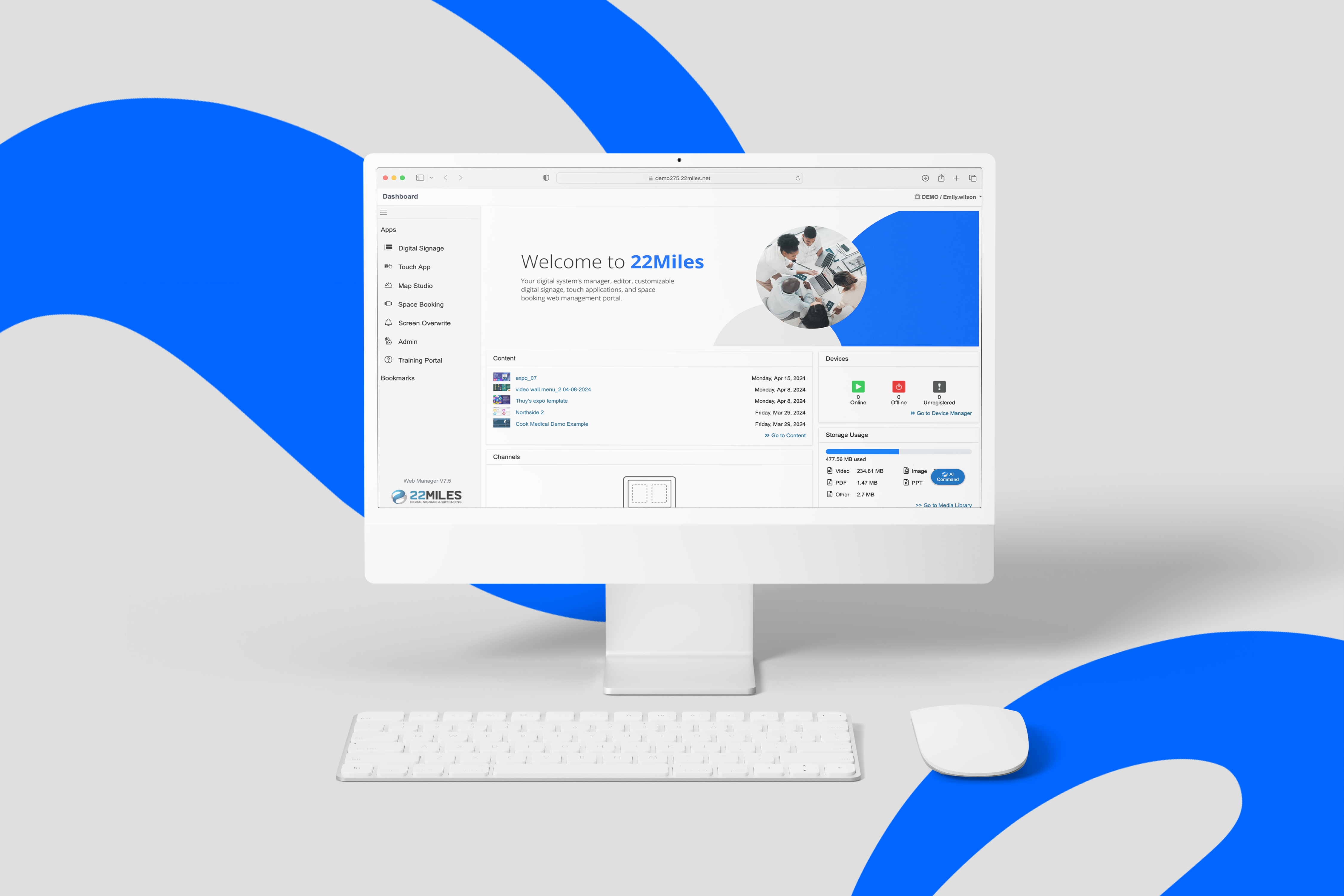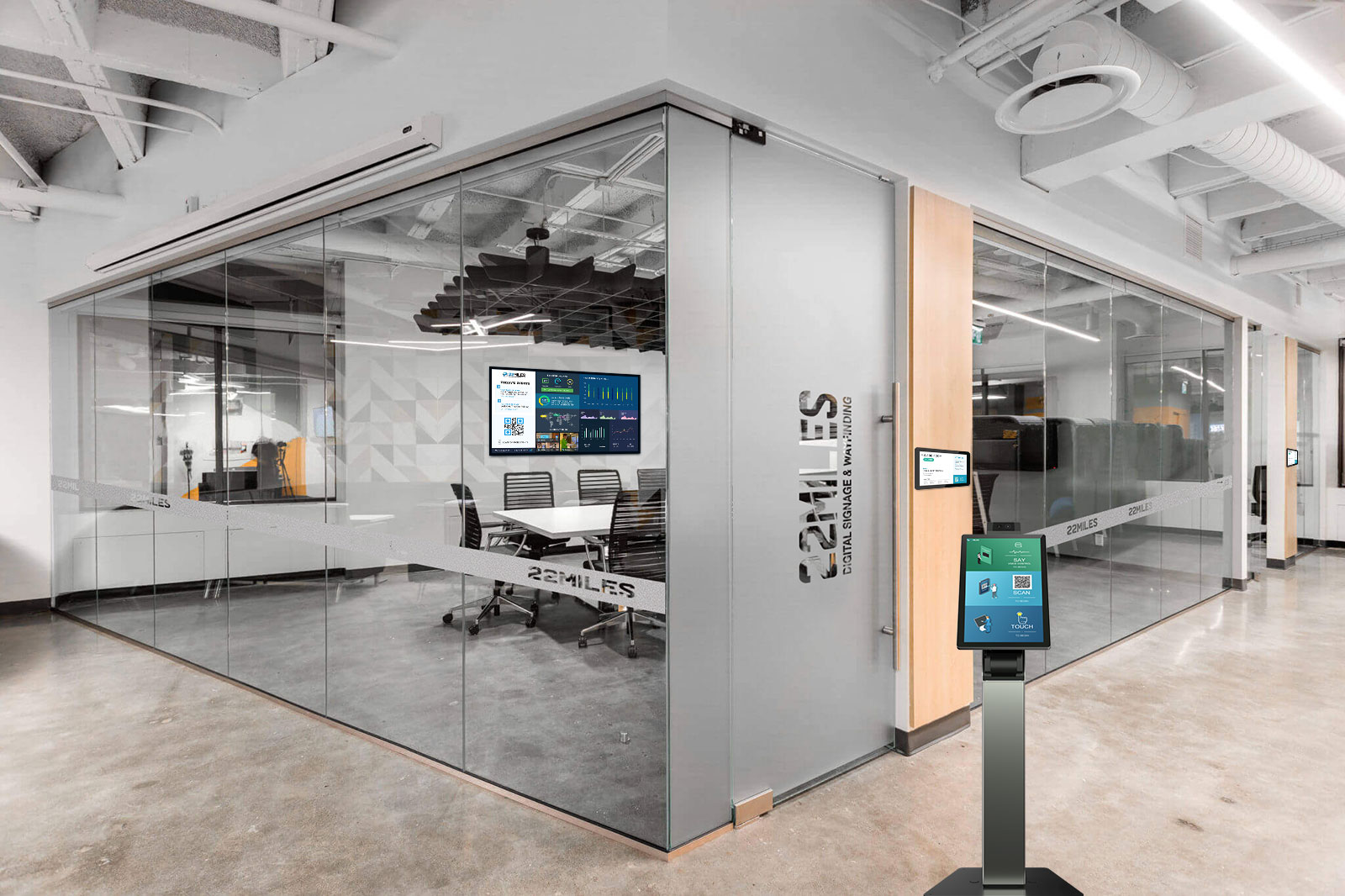While the visitor experience itself is a highly personal process that managers can never fully control, systems contractors can grow the opportunities to entice and comfort guests with the latest advancements in digital signage, wayfinding, information and communication technology.
The trickle back to normal as we once knew it has become a steady stream of adjustments for systems contractors, AV managers, staff, and visitors across all types of venues. With a greater emphasis on safe and seamless navigation, the demand for easy-to-use and easy-to-integrate content technology is spiking. As facilities welcome back employees and visitors alike, the latest advancements in digital signage and wayfinding technology are rising to meet the demand, leaving a steep learning curve for technicians to brave.
Embracing the capabilities of digital signage in a way that benefits business can be overwhelming: No longer is a stagnant screen in an entryway up to par with visitor expectations. Customers are seeking robust solutions that offer user-friendly digital signage and wayfinding experiences, while AV managers are after partners that provide simple programming, customizable interfaces, and interoperable software.
On top of innovative and streamlined software properties, AV and facilities managers need a collaborative, easy to toggle approach to ensure a unique, premium design, mobile control options, and peace of mind. The standard uses of digital signage have shifted dramatically to focus on the visitor, aiming to create a one-of-a-kind experience in a competitive landscape.
The latest information and communication technology in digital signage and content management delivers on the whole package. Let’s dive into the information and communication technology that allow companies to trade single screens and low-level access control in favor of fully interactive, immersive, and impressive experiences.
A Competitive Edge with Infotainment, Branding, and More
Information and communication technology is changing fast, and it’s everywhere. Now, visitors and employees alike not only expect that signage will be on-demand for information and wayfinding, but also that it will be responsive and convenient to use. For technicians looking to upgrade existing AV environments with a digital-focused experience, the right content management software can be the missing key. Immersive, custom experiences delivered through digital signage applications are immensely valuable for building brand equity and recognition, offering a “wow” factor that historically hasn’t been seen in signage.
Typically, when end users think of touch-based interaction, they picture a single touch screen that they can navigate like a tablet. While a few years ago this technology was innovative, AV manufacturers and integrators have leveled up the experience with new ways to interact. Custom signage with flexible content management platforms is growing in popularity as more companies implement AV technology that will both dazzle with design and provide meaningful information to guests.
With this upgrade displays as we know them are transformed into full experience centers: from tablet and mobile devices carrying on-demand wayfinding apps to direct LED and video wall designs, experiential design implementations are becoming a high demand “wow” factor for organizations to create that immersive experience while reducing some of the old school tools that typically occupy meeting spaces – whiteboards, “dumb” TVs, and more.
The ideal experience center is rooted in a customizable, robust content management system that grants managers complete control of their facility’s digital signage experience. The result of the initial touch screen is now a visually stimulating channel that carries throughout the facility, breaking down the barriers of single screens and creating a start-to-finish experience that serves the unique needs of any given facility.
Here, There, and Everywhere: Signage That Moves with You
Indoor wayfinding has evolved dramatically from printed signs and maps to interactive kiosks. Now, with smartphones, the paradigm is shifting once more. There are more ways to interact with signage than ever before, from voice commands and gestures to traditional touch methods, and from new implementations like thermal scanning and virtual receptionists to completely connected mobile wayfinding. The AV no longer stops at the point of signage: users can interact, receive feedback, and then take the experience with them on their mobile phone.
Users access mobile control via digital signage with a QR code scan, which allows them to interact with the display from their mobile web browser with no application install or download required. Eliminating the need to physically interact with digital signage and displays helps drive efficiency and accessibility to wayfinding in shopping or transportation centers, visitor kiosk check-ins for healthcare or hospitality facilities, and more. Supporting touch-free technology and delivering wayfinding to the fingertips, this growing application is defining a new standard for the visitor experience.
Room booking & Hot desking
As occupancy continues to increase, digital signage software experts are focused on how to make the visitor experience stronger. One of the latest information and communication technology features making a splash for AV managers and systems contractors is room booking and hot desking, which provides a major assist in navigating and planning around facilities. With integrated room scheduling incorporated into wayfinding apps, AV managers can plan for space allocation and accommodate evolving safety measures.
The key to successful room booking and hotdesking for conferences, events, and office spaces is connectivity. Digital signage that integrates with collaboration apps has enhanced capabilities for room booking integration and design, wayfinding for the hoteling and hotdesking features, check-in or team member invite, real-time messaging, and RFID badge/ID support for touchless swipe check-in components. This list of features accounts for most of the visitor’s experience, providing valuable insight for managers to make continuous improvements. Even shifting into post-COVID operations, the value of the scheduling integration will carry on as managers seek a streamlined, simple, and seamless method of booking and organizing events and meetings.
Uncomplicating the Integration Process
Systems contractors are still learning about and understanding all that digital signage can do. It’s not a novelty anymore, but rather a dynamic medium for information that creates an entertaining, immersive experience. That said, it’s becoming necessary for a competitive edge, and it’s presenting a learning curve that can be braved with the right technology. Luckily, AV managers have the option to bring a CMS partner that can provide full design service assistance and consultancy on the implementation to simplify the AV engineers learning curve for new products, especially in software.
AV managers usually don’t want anything to do with managing software, but they do want to know they have a partner to consultant and offer the services to get the job done. And given the recent upgrades brought on by COVID, it’s becoming more commonplace to call on these partners to retrofit software to existing systems. Not every install is standalone; instead, most implementations are a means of improving and adding features to existing signage. From the AV manager standpoint, one of the most important considerations for implementing new software is compatibility. To upgrade systems with software interoperable with the most popular, robust third-party APIs – from Crestron to Bright Sign and from Mersive to Intel – is critical for today’s world. When choosing a partner for digital signage upgrades that will leave visitors and staff in awe, without technical snags, a robust platform that will integrate across technologies is a win.
Post-install, the demand for simplicity and customization are in. With new drag and drop layouts and visual filter capabilities at their fingertips, brands can leverage the power of digital signage to communicate, entertain, and streamline navigation across facilities. The latest developments in software allow AV managers to customize the look and feel of every sign, kiosk, and video wall, creating a memorable and lasting experience for visitors, staff, and employees alike.
Digital signage, wayfinding, information and communication technology can bring people together, convey important messages, streamline operational costs and resources, and support efficiency. Tailored to optimize the guest experience across industries, digital signage is now at the heart of facilities’ infrastructure and offers a new way to bring a great first impression to guests. While the visitor experience itself is a highly personal process that managers can never fully control, systems contractors can grow the opportunities to entice and comfort guests with the latest advancements in content management, digital signage, and wayfinding technology.
About Tomer Mann
Tomer Mann is the EVP of 22Miles. As a veteran in the digital signage industry for more than ten years, Tomer strives to enhance visual communication consulting services to higher education, hospitality, retail, transportation, government, corporate, venues, healthcare, and other large organizations.
22Miles is a global leader in experiential 3D wayfinding, and immersive digital signage software technology



